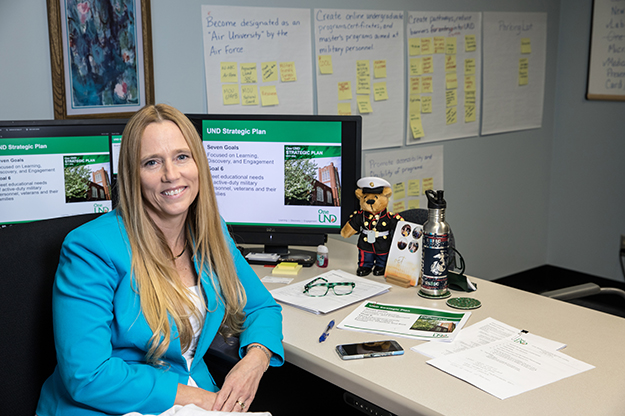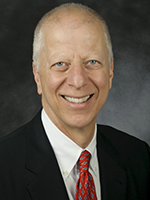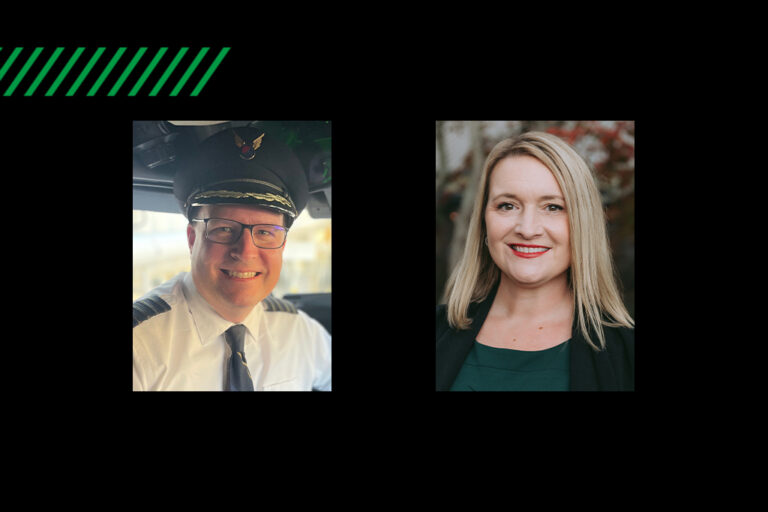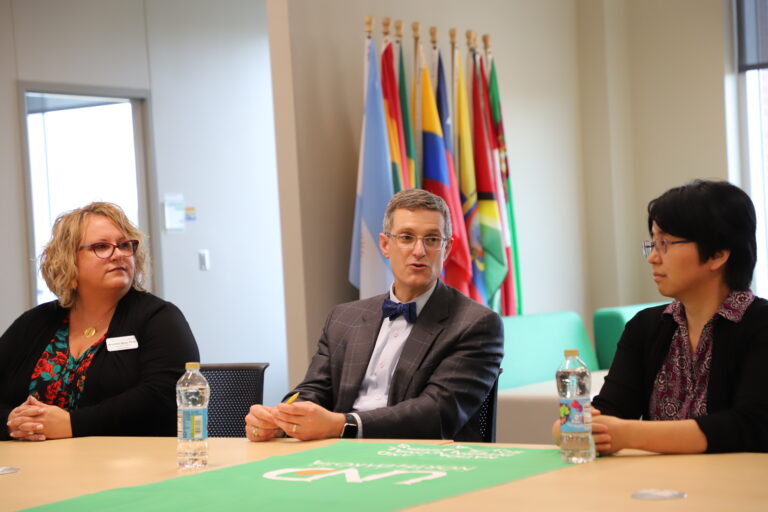Military-friendly UND? It’s in the cards
UND efforts to improve higher ed for veterans put it at forefront of setting national standards

When 30 higher education institutions convened at Boston’s Northeastern University at the behest of the U.S. Department of Defense’s Transition Assistance Program, they brainstormed ways to help U.S. military veterans achieve academic success.
This body, Veterans in Higher Education Collaborative, wants to create military-friendly schools across the nation.
But what exactly constitutes “military-friendly”?
“If you look at the term, it doesn’t have a real, standardized definition,” said Sherry Lawdermilt, UND director of applications and integrations support, and a former Marine who grew up the daughter of a Marine. Throughout her doctoral research on the subject, she says a variety of publications and websites have presented their own interpretations.
That’s when she pulls a card from a stack on her desk.
It’s a two-sided, three-by three-inch piece of paper created by UND’s Veteran & Nontraditional Student Services office and Marketing & Creative Services. Lawdermilt says its purpose is to inform faculty on campus.
“Tips to be military friendly,” it says at the top. “Build rapport; be mindful of surroundings; recognize the experience gap; understand absences; be aware; offer support. In brief passages it advises readers how to be more sensitive to, and aware of, the needs of active military and veteran students.
“The veteran services office made these by working with veteran students about what they’d want faculty to know,” Lawdermilt told UND Today. “It’s a way to create awareness and have the students’ voices heard.”
It’s by these merits, actively pursuing Goal No. 6 of the One UND Strategic Plan, that UND gained membership in the military education Collaborative. Word spread about Lawdermilt’s tip cards; soon several people came to ask if they could have one.
Lawdermilt, project manager for Goal No. 6, says that establishing definitions and measurements for terms like “military-friendly” are vital to guiding military personnel toward schools that can meet their needs.
“There was discussion that this Collaborative could develop what those terms mean and have those ideas adopted by the Department of Defense and the Department of Veterans Affairs,” she said. “They would be a measure for those departments and for veteran students who are going to be using their higher education benefits – they can see which institutions meet those standards.”
UND’s progress on Goal 6, and joining this nationwide Collaborative, puts them on the forefront of setting such standards.

High-demand courses
Going off last year’s showcase of the One UND strategic plan, Lawdermilt’s crew made strides on their action items.
They’ve integrated three high-demand online programs with the Air University Associate to Baccalaureate Cooperative with the Air Force, and have two more in the works. Bachelor’s degrees in general studies, psychology and communication all rank highly on degrees that active military and veteran students want to pursue. Computer science and civil engineering are also highly ranked and soon-to-be-integrated. UND can offer up to 10 courses, fully available online, through the Air University program.
“The Community College of the Air Force issues associate’s degrees based on the training they’ve done, as well as additional coursework,” Lawdermilt said. “We’re taking those associate’s degrees and translating them to credit hours toward a bachelor’s degree at UND.”
UND has also been accepted into the Community College of the Air Force’s General Education Mobile program, meaning airmen can select UND online courses to fulfill their general education requirements toward the aforementioned associate’s degrees.
Transfer equivalencies
There also have been developments impacting all branches. A new tuition rate is in place for active duty members – $250 per credit – that matches the current cap of service members’ tuition assistance. The only programs exempt from this rate are engineering and aviation, due to the additional costs of the programs.
And last year, UND began accepting credit for military training and experience based on recommendations of the American Council of Education (ACE). Currently the credits are applied as general electives, unless students petition colleges for specific credit equivalencies. UND Goal No. 6 team is working on developing transfer equivalencies based on comparisons between UND courses and ACE recommendations.
Lawdermilt illustrated the equivalency issue by describing a veteran with years of experience in logistics and supply. “If you’re making them take a basic logistics course, that’s not beneficial,” she said. “We want it so a student comes in with a transcript and we will know if ‘this’ equates to ‘that’ — they won’t have to petition for it themselves.”
Creating presence

UND Provost Tom DiLorenzo, the team captain for Goal No. 6, lauded Lawdermilt for the work she’s done as project manager – essentially the second-in-command overseeing implementation of the strategic goal.
“Sherry has been a tremendous supporter of enhancing our military friendly status, the moving force for getting Goal 6 implemented and for getting UND’s name prominently visible with the military,” he added.
Focusing more regionally, UND has begun working with the North Dakota National Guard to develop a means of distributing promotional materials at training centers and recruiting offices. Lawdermilt hopes that working with UND Marketing & Communications yields more military-centric promotion online.
“We have great programs here but people outside of the immediate area might not know about what we do at UND,” she said. “The online component is important to military student populations. If we have the other items that make us military-friendly, we need to let them know that.”



